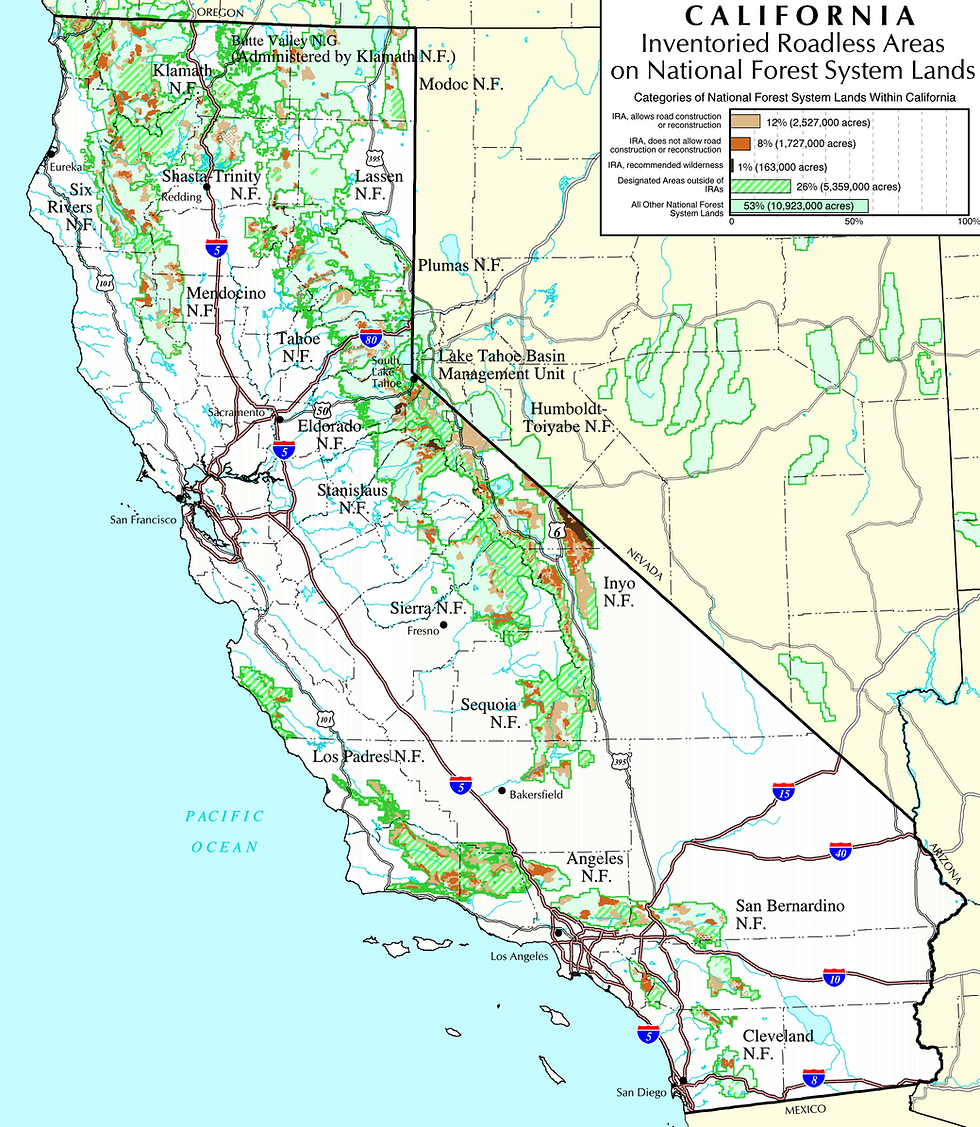EPIC Vigilance Saves Old-Growth Fir and Spotted Owl Nest from Sierra Pacific Industries Saws
- Jan 23, 2013
- 2 min read
After public comment by the Environmental Protection Information Center (EPIC) about questionable logging plans proposed near the Redwood National Park instigated a higher degree of state agency review, Sierra Pacific Industries (SPI) has recently dropped a proposal to log 22 acres of old growth Douglas fir forest on private holdings in the Cloney Gulch and High Prairie Creek drainages of the Redwood Creek watershed, Humboldt County, California. The Redwood Creek drainage is of global importance as a cornerstone watershed of the Redwood National Park, and one that has received millions of dollars of restoration investment since the establishment of the park more than 40 years ago. SPI has a small in-holding in the upper Redwood Creek drainage, and owns more than 2 million acres of forestlands statewide.
This stand of old growth Douglas fir forest that SPI intended to log is of significance because it provides critical nesting and roosting habitat for Northern Spotted Owls. In addition, the old-growth forest sits on steep inner gorge slopes adjacent to Redwood Creek, providing critical refugia for listed salmonids, and an essential wildlife corridor for numerous other species. The upper portions of Redwood Creek where the plan is located have been heavily managed for timber production over the decades, and the old growth adjacent to the creek represents some of the last remnants for miles.
SPI’s original proposal to clearcut the old growth was shrouded in deceit. SPI failed to identify that old growth would be harvested in the original Timber Harvest Plan document. Only after a Pre-harvest Inspection in which California Department of Forestry and Fire Protection (CAL FIRE) field staff identified the stand as old growth did the public learn of the real qualities of the stand. In addition to this, SPI had originally typed the old growth stand as ‘foraging’ habitat for Northern Spotted Owls. Yet, it was not until the California Department of Fish and Wildlife (CDFW) inspected the project site and found that the stand was actually core nesting and roosting habitat for owls that SPI changed the habitat designation of the stand to reflect its true importance to the owl, a species under extreme conservation duress.
After reviewing the proposed old growth clearcutting within a known Northern Spotted Owl nesting and roosting core area, CAL FIRE biologists determined that harvesting the unit as proposed would result in direct harm to owls. SPI subsequently dropped the unit from the harvest plan. Unfortunately, the company still refuses to consider the old growth stand as part of the essential core area for resident spotted owls, and still refuses to acknowledge the old growth quality and conservation importance of the stand.
“This is yet another instance where proposed SPI logging operations directly threatened Northern Spotted Owls,” said Rob DiPerna, EPIC’s Industrial Forestry Reform Advocate. “SPI’s continued efforts to deceive agencies and the public for the purposes of driving spotted owls off its lands have once again been exposed as harmful and in direct conflict with the Endangered Species Act.”
In July of 2012, and again in September 2012, EPIC submitted comments on the “Hiker’s Parade” Timber Harvest Plan because the Plan would clearcut a forest stand with “130+ year old Douglas-fir” that provides habitat for spotted owls and other wildlife species. Subsequently, the agencies charged with oversight of the Plan – CDFW and CAL FIRE – took a closer look and began asking SPI questions about the old-growth and impacts to wildlife. The “Hiker’s Parade” logging plan would have essentially destroyed a known NSO core area by removing essential and limited old growth habitat. On Friday, January 18, 2013, due to EPIC vigilance, and an encouraging act of agency ground truthing, SPI withdrew the old-growth stand from their Timber Harvest Plan.





Comments